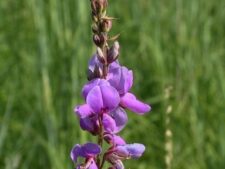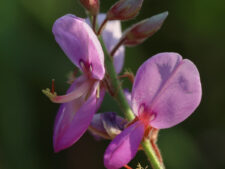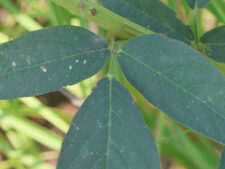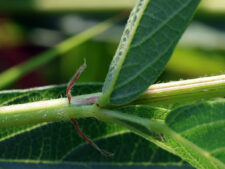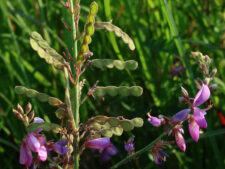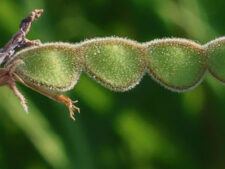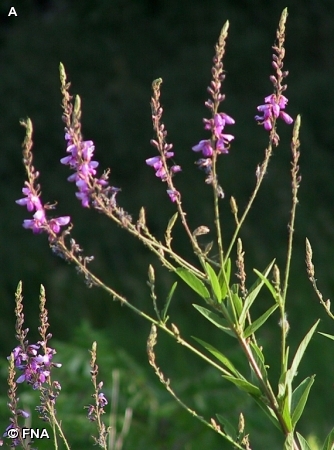
This native erect, branching perennial usually grows 2-4 feet tall or more in good soils. The alternate, short-stalked leaves are divided into 3 oval leaflets 2-4 inches long, the center leaflet longer than the others (D). At the base of the leaf stalk are 2 leaf-like structures (stipules). In other tick clovers they are green, looking much like a small leaf, but in Canada Tick Clover they are narrow, almost needle-like often drying up and falling off early (E). Branching, gently curved flower stalks arise from the tip of the stem or leaf axils (A). They hold short-stalked elongate clusters (racemes) of pink to purple pea-like flowers about 1/2 inch long (B). Projecting from the center of the flower is a curved tube-like structure containing the stamens and pistil (C). Fruits are 3-5 segmented pods (loments) resembling a string of beads which have convex lower margins and flatter upper ones (F,G). They are covered with hooked hairs which stick to fur, clothing, shoestrings and hair of their unwitting dispersal agents.
This plant looks very much like Illinois Tick Clover (D. illinoense) which has longer leaf stalks, broader, more leaf-like stipules at the base of the leaf stalk, and segmented seed pods with convex margins both above and below. Illinois Tick Clover also usually has one dominant flower stalk with fewer, more widely spaced flowers unlike the bushier, more branched and showier flower stalks of Canada Tick Clover.
Grows in moist to dry prairies, woodland edges, ditches and stream banks, flowering from July through September. It is uncommon in prairie restorations at both Fontenelle Forest and Neale Woods. Nebraska Prairie at Neale Woods is probably the most reliable site.
The larger, denser, more numerous flower clusters of Canada Tick Clover have prompted its alternate common name, Showy Tick Trefoil. The seed pods covered with dense hairs designed to adhere to the fur of unsuspecting animals and human clothing have earned it another very appropriate name, Beggar Ticks.
Tickclovers require insects for pollination and are considered good honey plants. These palatable plants are browsed by livestock and wildlife including our resident deer population.
The content of NatureSearch is provided by dedicated volunteer Naturalists of Fontenelle Forest who strive to provide the most accurate information available. Contributors of the images retain their copyrights. The point of contact for this page is: Neal Ratzlaff.

 Identification
Identification